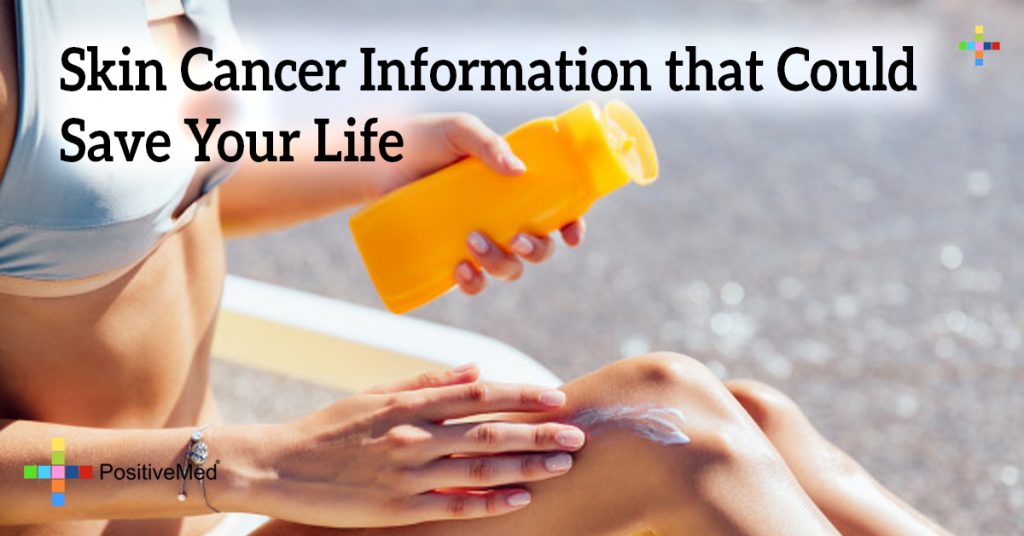
Non-melanoma is the most common type of skin cancer, this group of cancers includes all types of skin cancer except malignant melanoma, which develops from melanocytes.
CAUSES OF SKIN CANCER:
• Excessive exposure to ultraviolet radiation (UV) the main source of which is sunlight. The degree of exposure to radiation depends on the intensity of light, exposure time, and if the skin was protected. People living in areas where they are exposed year round to intense sunlight are at greater risk. Being outdoors for extended periods without appropriate protection dramatically increases risk.
• Tanning beds are a source of UV radiation that increase risk of skin cancer.
• Continuous exposure to chemicals such as arsenic, industrial tar, coal, paraffin, and certain oils
• Exposure to radiation like those produced by X-rays
• Injuries, serious or prolonged skin inflammations, or damage caused by inflammatory skin diseases
• Treatment of psoriasis with Psoralen and UV light
• Rare inherited conditions that reduce the skin’s ability to repair DNA damage as a result of exposure to sunlight, those with this disorder often develop a number of skin cancers, starting in childhood.
SYMPTOMS OF SKIN CANCER:
As part of routine cancer prevention a doctor may carefully examine your skin, but we should check our own skin once a month. Be aware of any moles, blemishes, freckles, and other marks in order to spot any changes. Examine all areas, including the palms and soles of feet, lower back, and back of legs. The melanoma may have the appearance of skin tags. The primary warning signs are the appearance of a new lump, a growing spot or bump, or a sore that does not heal within 3 months. Other types of carcinomas appear as red, flat, and scaly, or small waxy, shiny, and translucent to highlight areas that may bleed with a minor injury color. There may be one or more irregular blood vessels visible, or areas of blue, black, or brown.
Always check for the ABCDEs of skin cancer! Check for the following changes on your moles, birthmarks or any spots on your skin:
PREVENTION OF SKIN CANCER:
• The best way to reduce skin cancer risk is avoiding unprotected exposure to sunlight and other sources of ultraviolet light. The easiest way to avoid exposure to UV light is to keep out of the sun and stay in the shade whenever possible. This is particularly important at noon, when UV light is more intense.
• Protect yourself with clothing, including a shirt and a wide-brimmed hat. Tightly woven fabrics offer the best protection against the sun. Sunglasses that offer good coverage, with UV absorption of 99% to 100% protect your eyes and the skin around them.
• Use sunscreen with a protection factor of SPF 15 or higher on areas of skin exposed to the sun, particularly when sunlight is intense. People with paler skin burn more easily and should apply sunscreen.
Follow instructions when applying sunscreen. To be effective it should be applied 30 minutes before sun exposure, and on all areas of exposed skin. Many sunscreens stop working when a person sweats or goes swimming and should be reapplied to offer maximum protection. Use protection even on hazy or cloudy days, UV light can penetrate most cloud cover.
Stop using tanning beds, a healthy or safe tan does not exist. Tanning is a defense mechanism, the damage has already occurred.
Sunscreen should be used year round, not only in the summer. Sand, water, and snow reflect the sun’s rays and increase risk of damage.
UV light is most potent between 10am and 4pm, there is still risk when the sun is out.
SUN PROTECTION FACTOR (SPF)
This number measures the minimum exposure time needed to produce sunburn with or without sunscreen when exposed to direct radiation, for example if a person takes 10 minutes to burn without sunscreen, with use of protective SPF 20 it should take 200 minutes.
This measurement method is approved by the FDA (Food and Drug Administration) in the USA. To Find out how to choose the right sunscreen visit this article: ” Which SPF is Right For You?“
Healthy attitudes towards sun:
• Choose shade when possible, under a tree, roof, umbrella, or tent
• Wear appropriate clothing and accessories for protection: a cap or wide-brimmed hat, tightly woven clothing, and sunglasses with UVR filters
• Apply broad-spectrum sunscreen (that protects against UVA – UVB) with SPF of 15 or greater to all exposed skin 30 minutes before going outside and reapply every 2 hours and after swimming.
• Do not expose children under 1 year to direct or indirect sun. After 6 months child-friendly sunscreen can be applied for limited sun exposure.
• Avoid direct sun exposure from 10 am to 4 pm, when UV rays are most intense
• Some medications can cause skin reactions from sun exposure, ask your doctor
Sources
Ferguson, A. (2013). Skin Cancer & Sunscreen. Business People, 116-117.
You Know Everything about Sun Care. (2014). Prevention, 66(5), 75-83.
Sepkowitz, K. (2013). Sunny With a Chance Of Cancer. Newsweek Global, 161(22), 1.
DEHAVEN, C. (2014). SUNSCREENS: WHAT YOU (AND YOUR CLIENTS) NEED TO KNOW. Skin, Inc, 26(4), 34-44.
Stanford Cancer Institue





